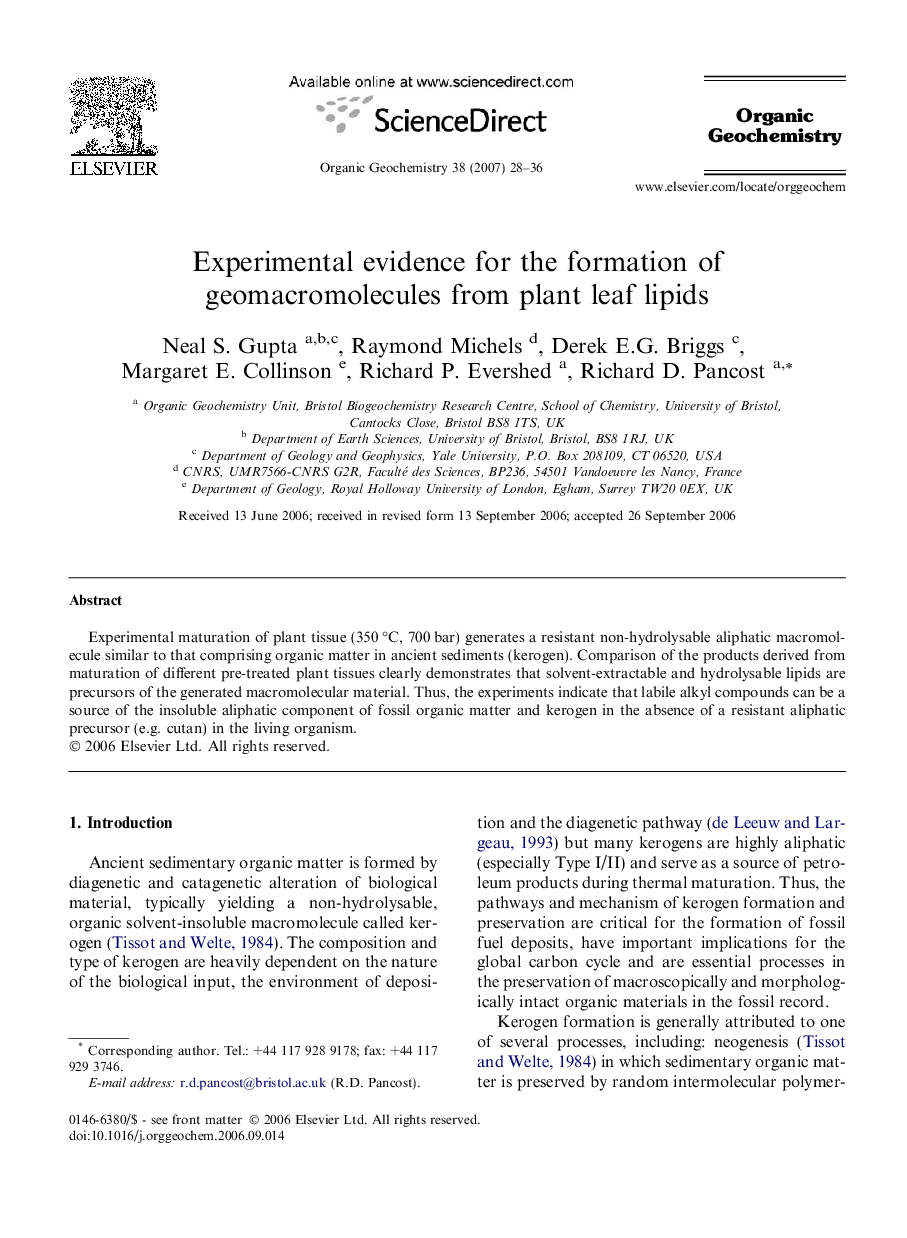| Article ID | Journal | Published Year | Pages | File Type |
|---|---|---|---|---|
| 5162112 | Organic Geochemistry | 2007 | 9 Pages |
Abstract
Experimental maturation of plant tissue (350 °C, 700 bar) generates a resistant non-hydrolysable aliphatic macromolecule similar to that comprising organic matter in ancient sediments (kerogen). Comparison of the products derived from maturation of different pre-treated plant tissues clearly demonstrates that solvent-extractable and hydrolysable lipids are precursors of the generated macromolecular material. Thus, the experiments indicate that labile alkyl compounds can be a source of the insoluble aliphatic component of fossil organic matter and kerogen in the absence of a resistant aliphatic precursor (e.g. cutan) in the living organism.
Related Topics
Physical Sciences and Engineering
Chemistry
Organic Chemistry
Authors
Neal S. Gupta, Raymond Michels, Derek E.G. Briggs, Margaret E. Collinson, Richard P. Evershed, Richard D. Pancost,
